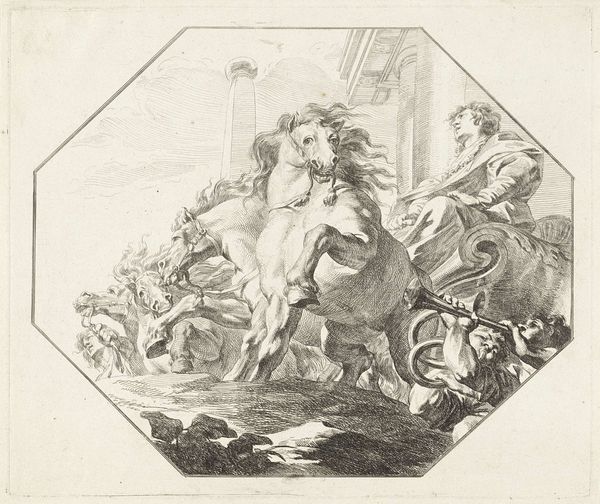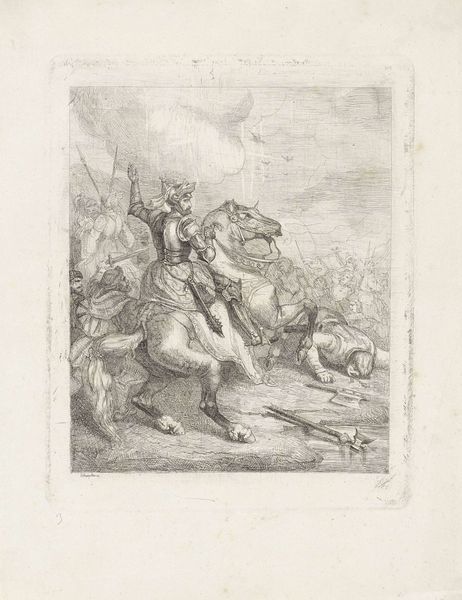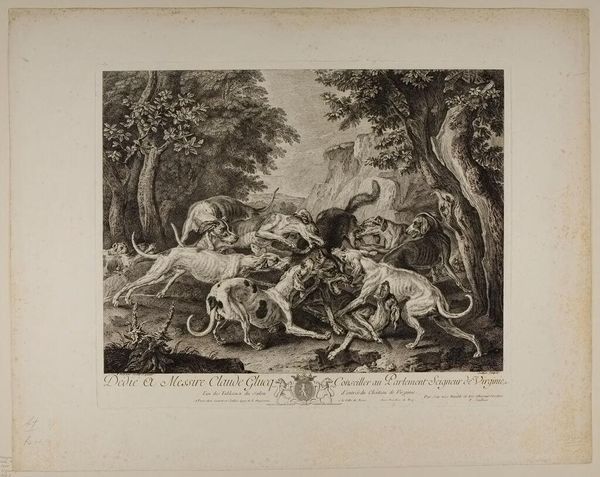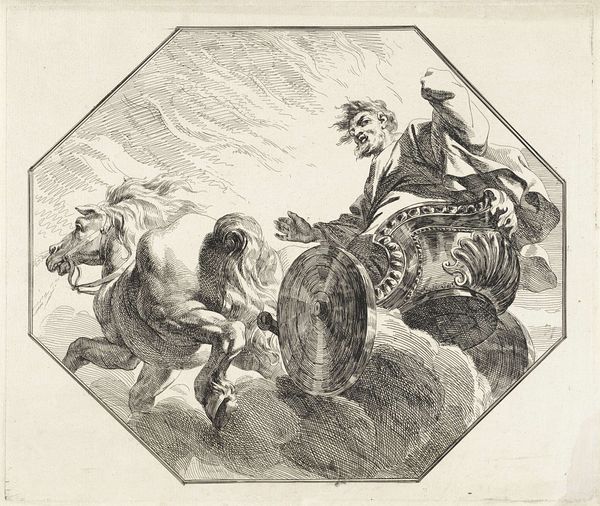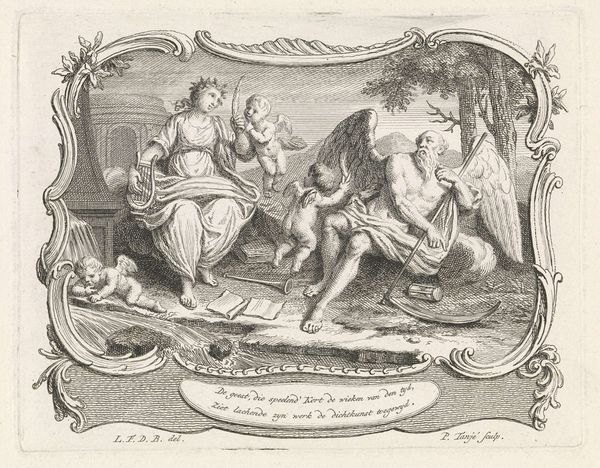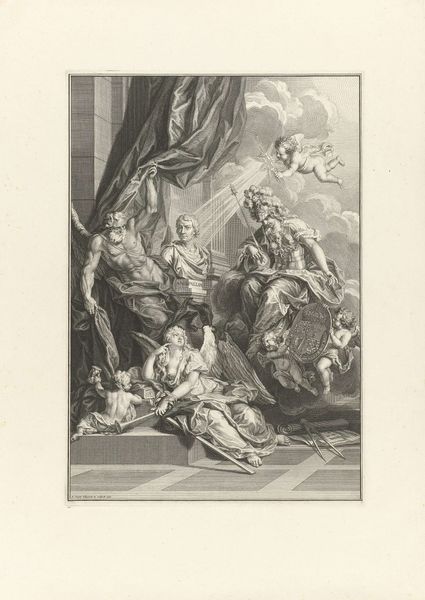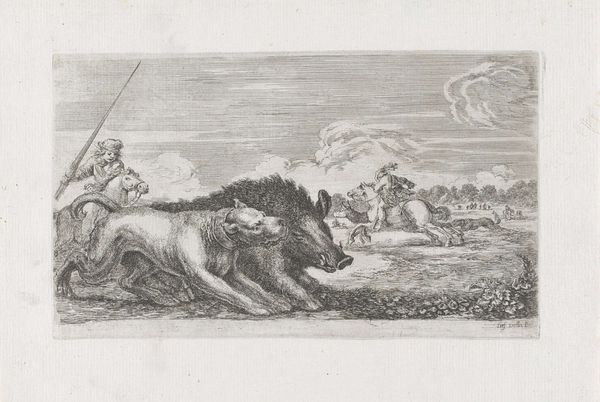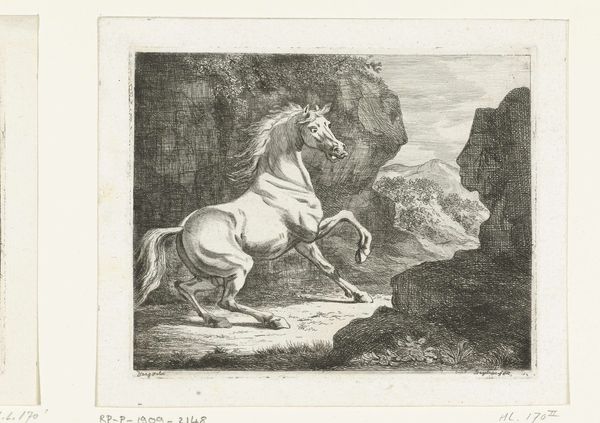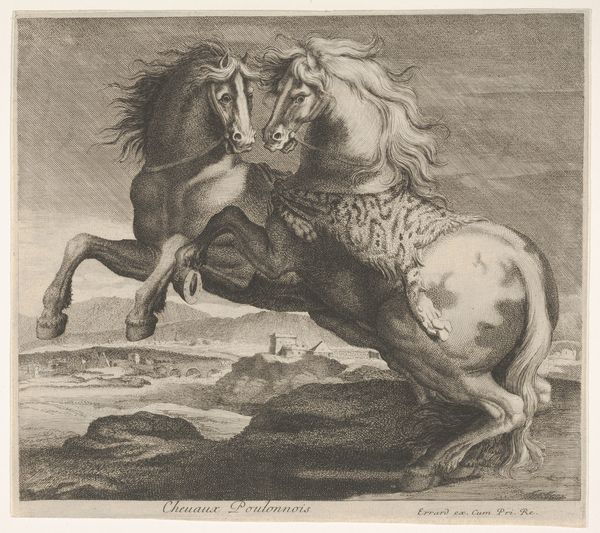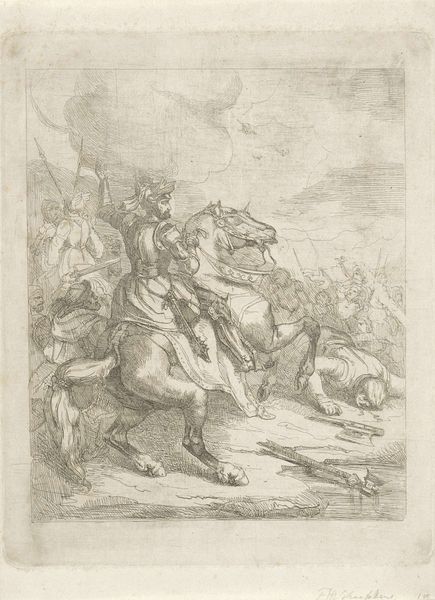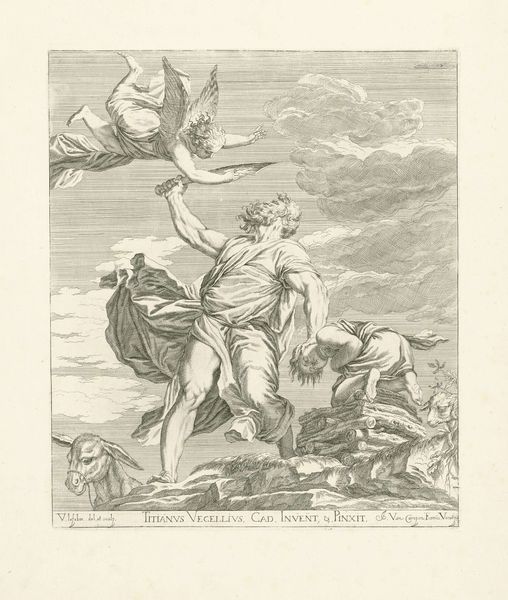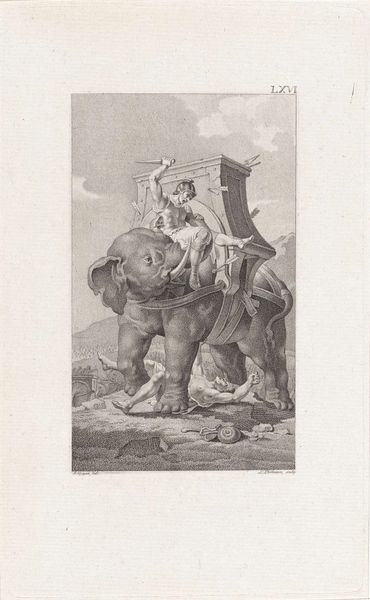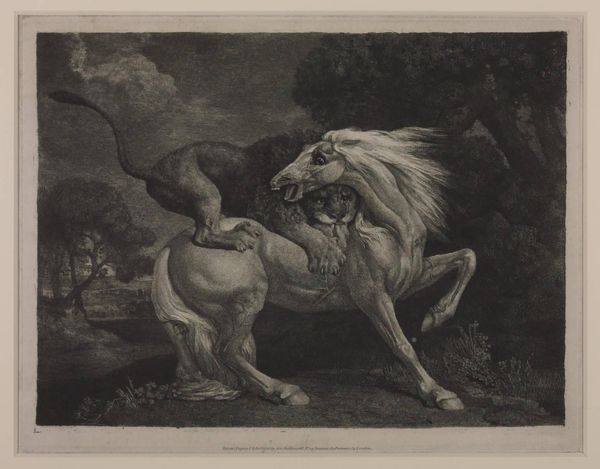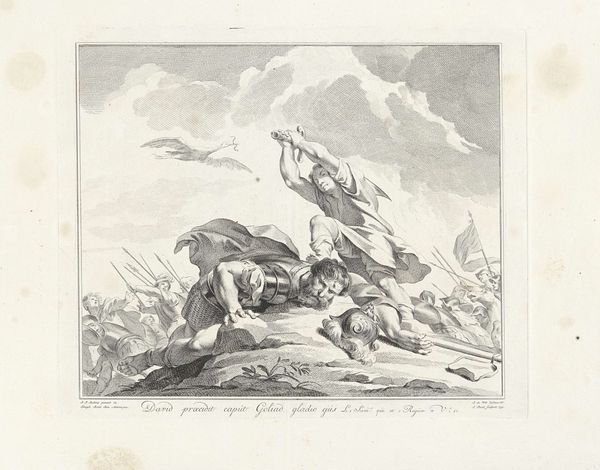
print, engraving
#
narrative-art
#
baroque
# print
#
landscape
#
figuration
#
history-painting
#
engraving
Dimensions: height 335 mm, width 396 mm
Copyright: Rijks Museum: Open Domain
Jan Punt created this etching depicting Joseph in the chariot, appointed by Pharaoh over all of Egypt. The print comes from a lineage of reproductive engraving, a laborious process designed to disseminate imagery widely. First, the image would be drawn precisely on a copper plate covered in wax. Then, using a tool called a burin, the artist would incise lines into the metal, the depth and density of which would determine the richness of the printed image. Finally, the plate would be inked and pressed onto paper, transferring the image. In the 18th century, printmaking was closely tied to the rise of a commercial market for art. The cost of paper, ink, and skilled labor was offset by selling the prints in large numbers. Punt’s mastery of the burin allowed him to create fine lines and textures, lending depth and drama to this scene. Considering the cultural context of the image allows us to appreciate the social and economic forces that shaped its production and distribution, challenging our understanding of art history.
Comments
No comments
Be the first to comment and join the conversation on the ultimate creative platform.
